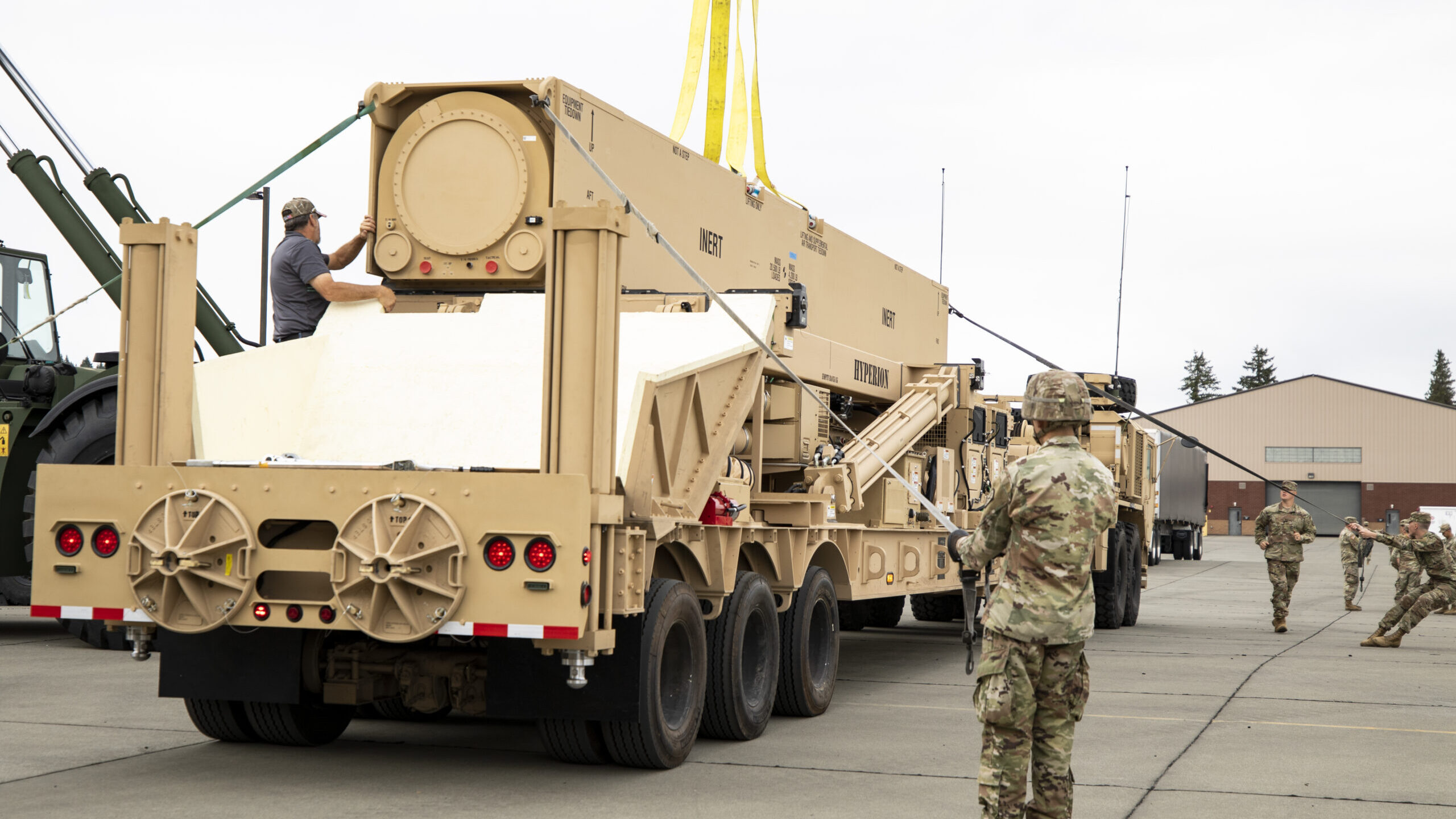
The delivery of the first prototype hypersonic hardware to Soldiers of the 5th Battalion, 3rd Field Artillery Regiment, 17th Field Artillery Brigade is completed on Oct. 7, 2021, with a ceremony at Joint Base Lewis-McChord, Wash. (U.S. Army photo by Spc. Karleshia Gater)
AUSA 2022 — The US Army will have a “couple” of live fire flight tests this fiscal year for its hypersonic weapon program as it works toward fielding the missile in the coming months, according to the three-star leading the effort.
Lt. Gen. Rob Rasch, director of the Rapid Capabilities and Critical Technologies Office, said today the Long-Range Hypersonic Weapon program is still on track to field to units by the end of fiscal 2023.
Rasch said that the tests will “characterize” the glide body, the two-stage rocket motor and ground support equipment. Asked what would happen if the test fails, Rasch said the RCCTO team would “manage risk.”
“If we have an anomaly and we don’t reach our … threshold, then we’ll sit down, analyze it and [talk] amongst the team and manage the risk as we go,” Rasch said during an event hosted by Defense News.
Soldiers with the I Corps’ 5th Battalion, 3rd Field Artillery Regiment, 17th Field Artillery Brigade at Joint Base Lewis-McChord, Wash., have been training with the LRHW since last September, when RCCTO was able to send the ground equipment. That equipment included a battery operations center, four transporter erector launchers and modified trucks and trailers. Each launcher holds two rounds.
“The unit is trained, and we’re now working to finish up the testing and then the actual build out of the all-up round,” Rasch said.
RELATED: How we fight: Army issues all-new handbook for multi-domain war
The Army is working with the Navy to develop the Common Hypersonic Glide Body, which the sea service will use for its Conventional Prompt Strike missile. The Navy plans to field its first live rounds in FY25, while the Army is procuring its second battery.
The Long Range Hypersonic Weapon is one of the Army’s top 35 modernization programs and can fly at least 1,725 miles. The weapon is a key priority under the service’s long range precision fires initiative, which also includes the Precision Strike Missile, Extended Range Cannon Artillery and Mid-Range Capability. The Mid-Range Capability and Precision Strike Missile are also scheduled to field to units this fiscal year.
FY23 is an important year for the Army’s modernization priorities, as the service plans to have 24 of of its 35 modernization either fielded or in prototyping. Asked if the service would be able to reach the goal, Army assistant secretary for acquisition, logistics and technology Doug Bush said he was “confident.”
“We have a very well informed plan to do so,” Bush said. “Of course, there are risks. So one thing we do very well and we’re going into some test cycles on new equipment, just learn from the testing, adapt our plans, and then move from there.
“So not everything is going to go perfectly, but that’s the point of doing the test.”























